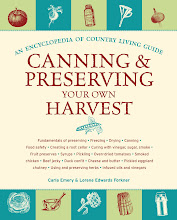
You'd be surprised how many different styles of cooking pans you can buy in cast iron: a French fryer with basket, a stew pan, griddles of various sizes and shapes, French bread and breadstick pans, and more.
Seasoning Cast Iron: Baked beans, stews, roasts, etc. can be left in seasoned cast iron Dutch ovens treated in the following way without worrying about rust or metallic taste, since there is no exposed metal. Outdoor cooking doesn't hurt the seasoning.
Before using a new pan:
1. New iron cookware has a factory-applied pre seasoning coating. So first wash your pan thoroughly with a mild dishwashing liquid. Rinse and dry completely with a dishcloth. (Never let your cast-iron cookware drain dry. That's inviting rust.)
2. Now grease the inside with suet or vegetable shortening. Rub the grease in. Lightly grease the outside of the pan also. Wipe away any surplus. Do the same for the lid if it has one.
3. Place in 250-275˚F oven and let season ("bake") for 8 to 10 hours, or leave overnight.
4. Do not put on any lid while treating it, since it will stick on and you will need a crowbar to pry it open again.
5. Let cool naturally. Your pot is now ready for use.
6. Or you can apply a second coat - or more. Just repeat the procedure. If the first coat is spotty and has bare spots, don't worry. Just apply a second, even possibly a third, coat; that will coat the bare spots.
Re-coating: If the coating gets scratched or is burned off by overheating, just recoat as per above instructions.
Cleaning Cast Iron. Treat your seasoned cast-iron ware as you would a Teflon-coated pan. Don't use a scraper inside it; that could gouge off the coating. Don't use a metal scratch pad to clean it; that could create deep scratches in the surface, which food will then stick in. Use a plastic cleaning pad if you must. Dry your pan after every washing. Grease it if you want. I don't follow the school of thought that says you shouldn't wash an iron pan. That's unreal. If you are having trouble with an iron pan rusting, recoat and/or grease it after every washing. My cast-iron skillet must be at least 40 years old though, and it hasn't rusted yet.
Cooking in Cast Iron. Don't cook with cast iron at a temperature higher than 300-350˚F, or the pan may crack. Don't leave a pan on high heat with no liquid in it. First it will get red-hot, and then it will crack and be ruined. Your pan will get blacker with use, and that's what it's supposed to do. Mine are all coal-black. Never cook food high in acid content in a cast-iron (or aluminum!) pan. The acid will work on the pan, and your dish will pick up more iron content than will taste good. Your pan is for cooking only; don't store food in it unless it's well-seasoned (the pan, not the food).
Get creative with the best pan in your kitchen! Check out the recipe for Cornbread Pudding from the Cast Iron Skillet Cookbook!


•Position a rack in the center of the oven and preheat to 350°F.
•Put the cubed cornbread in a buttered 10- or 12-inch cast iron skillet. Set aside. Heat the butter in another skillet over low heat, add the onions, and cook very slowly, stirring occasionally, until soft and golden brown, at least 20 minutes. Remove from the heat. Scatter the onions, cheese, parsley, rosemary, and thyme over the cornbread cubes. Whisk the heavy cream and eggs with the salt and pepper in a mixing bowl and pour over the cornbread cubes. Let sit for 10 minutes to allow the cornbread to absorb some of the custard. Bake until set and golden, about 40 minutes. Serve hot.
Note: To save time, you can substitute cornbread made from a mix for our Moist Cornbread. Just be sure to let the cornbread cool completely before cutting it into cubes. For a more custard-like version of the pudding, increase the heavy cream to 3 cups, and use 4 eggs.








1 comment:
Oh yes, cast iron used to be my favorite to fry in too. I use almost nothing but stainless now, especially with my cooktop stove.
I grew up on cast iron also, the good ole days.
Post a Comment